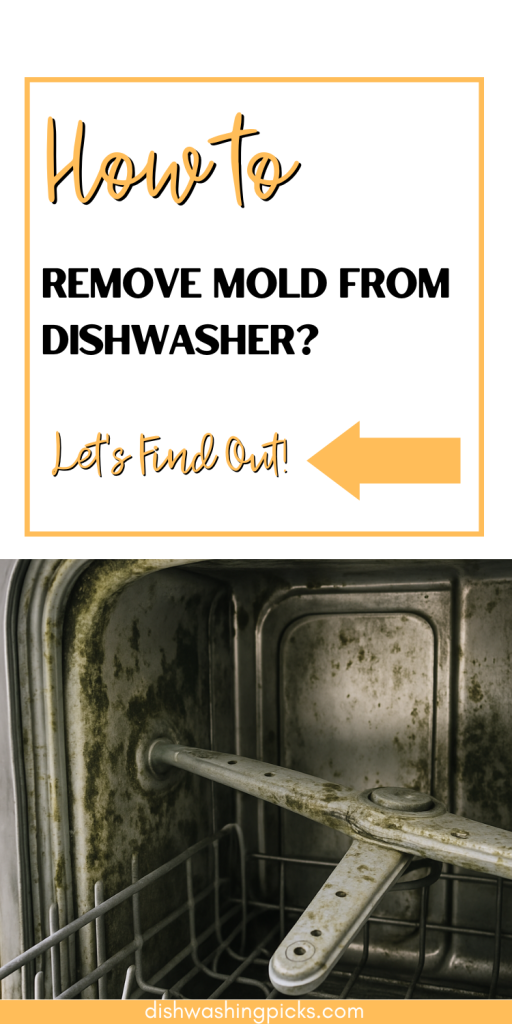
Alright, let’s get real for a sec—have you ever opened your dishwasher only to get hit by that weird, musty smell? Or worse, spotted some nasty black or green spots lurking around the edges? Yeah, that’s mold, and it’s creeping into your dishwasher party uninvited. Gross, right? But don’t panic—this isn’t some lost cause. You can totally fix it, and I’m here to show you how without turning it into a science project.
Why Does Mold Even Show Up in Dishwashers?
First off, you might wonder, “How does mold even get in there? It’s supposed to be a cleaning machine!” Funny thing is, dishwashers are basically a warm, damp playground, and that’s exactly what mold loves. Between leftover food bits, trapped moisture, and those tight little corners and seals, it’s like a perfect mold paradise.
And hey, if you’re someone who sometimes skips the rinse or leaves the dishwasher door shut tight after a cycle, you’re just inviting mold in for an extended stay. Mold isn’t just gross; it can mess with your dishwasher’s performance and potentially your health. So yeah, it’s worth tackling ASAP.
Spotting Mold and Knowing When to Act
Now, before you roll up your sleeves, how do you even know it’s mold? Well, it’s not always dramatic black spots. Sometimes it’s a faint musty smell or a slimy residue you didn’t notice before. The rubber gasket (that squishy seal around the door) is a common hiding spot, as are the corners and bottom of the dishwasher door.
If you spot these signs, don’t ignore them. Imagine this—mold spores floating around every time you open the dishwasher door. Not exactly the fresh kitchen vibe you want, right? So, time to clean it up, friend.
Step One: Clear Out the Visible Mold
Alright, grab some gloves—this part’s a little messy. Take a damp cloth or a soft brush and wipe away any visible mold you see. Don’t just stop at the door seal; check the detergent dispenser, spray arms, and around the edges. Mold loves those crevices.
If you want to go the extra mile, mix a little baking soda with water into a paste and scrub gently. Baking soda’s great because it’s abrasive enough to get the gunk off but gentle on your dishwasher.
Step Two: Time for a Deep Clean Cycle
Here’s where things get easy. Most mold problems clear up after a good deep clean. Grab a cup of white vinegar—the real MVP here. Pour it into a dishwasher-safe container and place it on the top rack. Run the dishwasher on the hottest cycle possible. The vinegar will help break down grease, kill mold, and deodorize the whole thing.
After that, sprinkle a cup of baking soda across the bottom of the dishwasher and run a short hot cycle again. This two-step combo is like a power wash for your dishwasher’s insides.
Step Three: Keep Mold from Coming Back
So you got rid of the mold, awesome! But here’s the million-dollar question—how do you keep it from sneaking back? It’s simpler than you think. After each wash, leave the dishwasher door slightly open to let moisture escape. You can even wipe down the door seals regularly with a vinegar-water solution to keep mold at bay.
Also, don’t forget to rinse off plates and utensils before loading. The less food debris in there, the less mold’s happy to hang around.
Final Thoughts: Mold-Free Dishwasher, Happy Kitchen
See? It’s not that bad, right? A little elbow grease, some natural ingredients like vinegar and baking soda, and a bit of regular care can keep your dishwasher mold-free and smelling fresh. It’s kind of satisfying when you think about it—your dishwasher not only cleans your dishes but stays clean itself.
Now, what’s your take? Ever battled a moldy dishwasher? Got any tips or tricks? Let’s swap stories because I’m pretty sure a lot of us have been there!
If you want, I can help you with more dishwasher tips or even how to fix weird dishwasher smells next time.
